Flatness: degrees, treatment and prevention
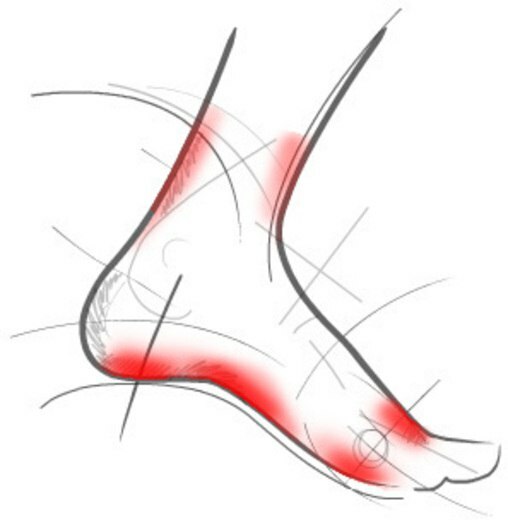
The human's feet are playing the role of shock absorbers that compensate for shaking the body when walking.If the muscular-ligamentous apparatus weakens, the stops flatten, and their "springy" function is reduced "to nothing", leading to severe changes in the musculoskeletal system, in particular - the spine.
Flattening is an orthopedic pathology characterized by deformation of the foot, and accompanied by the omission of the longitudinal and( or) cross vaults.It causes changes in posture and gait and often leads to pain in the spine and joints of the lower limbs.
Table of contents: Classification of flatfoot Manifestations of transverse flatfoot Features of longitudinal flatfoot The causes of the appearance of various forms of flatfoot Platypodia Symptoms Complications Diagnosis of flatfoot How to treat flatfoot?Prevention of flatfootClassification of flatfoot
According to the currently accepted classification, the following varieties are distinguished:
- longitudinal;
- transverse;
- combined.
Note : the transverse pathology contributes to more than 55% of the diagnosed cases.In clinical practice, there is often a combined disorder of the foot structure.
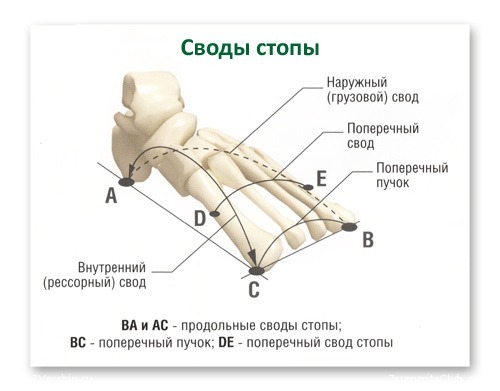
The etiology distinguishes such types of flatfoot:
- congenital;
- is ricky;
- is traumatic;
- is paralytic;
- is static.
Flattening also is subdivided in degrees.
Some changes are common for all types of flatfoot:
- At grade 1, changes are weak;More often we are talking about a "cosmetic" defect.
- 2 degree is accompanied by changes, visible from the side.It is already characterized by pain in the muscles of the legs( from the knee joint and below), as well as changing the gait, which becomes "severe."
- For grade 3, a noticeable deformation of the foot is characteristic, which adversely affects the entire musculoskeletal system.Against this background of flatfoot inflammatory diseases of the knee and hip joints as well as pathologies of the spinal column develop.The pains are of high intensity, and it becomes difficult for the patient to just walk.About the practice of physical culture and sports, it does not even come up.
Degrees of longitudinal form:
- 1 degree is felt by increased fatigue and local pain syndrome with long enough loads on the foot.The angle of the arch is 131-140 °, and its height is 35-25 mm.
- With the 2nd degree, the pain becomes more intense, and the patient starts to have problems when selecting comfortable shoes.The angle of the arch increases to 141-155 °, the height decreases to 24-17 mm.During the examination, the deformation of the talon-navicular joint can be determined.
- 3 degree is characterized by regular pain in the legs, feet and lumbar region.It is sometimes impossible to find standard footwear.The arch of the arch exceeds 155 °, and the height is less than 17 mm.At this stage of the pathology development there are symptoms of deforming arthrosis of the ankle joint.
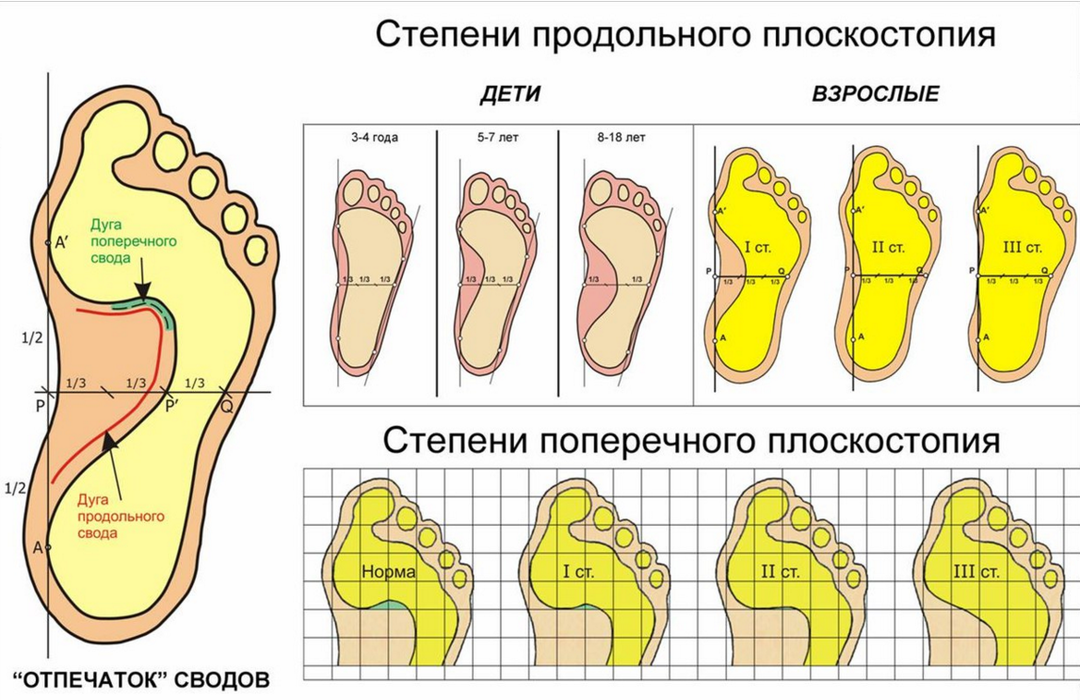
Degrees of transverse shape:
- for 1 degree are typical of regularly arising pains in front of the foot.The angle between the I and II bones of the metatarsal( determined during radiography) varies from 10 to 12 °, and the angle of deviation of the thumb is 15-20 °;
- at grade 2, severe pain is localized in the projection of the mid-metatarsal bones.The angle between them becomes larger - up to 15 °, and the first finger is deflected by 30 °;
- 3 degree is characterized by intense constant pain over the bones of the metatarsal, the angle between the I and II bones increases to 20 °, and the finger is deflected by 40 °.
Important: many young people are worried about the question: are they taking the army with a flatfoot? According to the current orders of the Ministry of Defense of the Russian Federation, a patient with a flat-footed third degree is considered unfit for military service and released from conscription.
Manifestations of transverse flatfoot
The transverse flatfoot is characterized by a flattening of the transverse arch of the foot.Its front section rests on the heads of all the bones of the metatarsus.The thumb is turned outward, and the middle has a "hammer-shaped" deformation.The total length of the foot in such a patient is reduced due to the fact that the bones of the metatarsal are divergent with respect to each other.This type of pathology is more typical for patients aged 35-50 years, especially women.
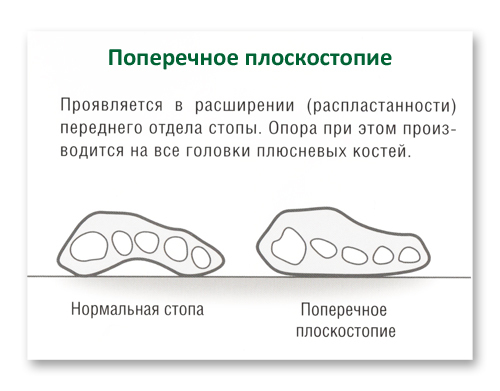
Note: among the signs of pathology - so-called."Bone" and "natoptyshi."
Features of longitudinal flatfoot
For the longitudinal variety, an increase in the length of the foot is characteristic.The flattened form acquires a longitudinal arch, so the sole contacts the horizontal surface almost over the entire area.The disease often develops to 16-25 years.
Important: Flattening of flat feet often depends on body weight.The higher the weight of the patient, the greater the burden of testing the bones and ligaments of his foot.
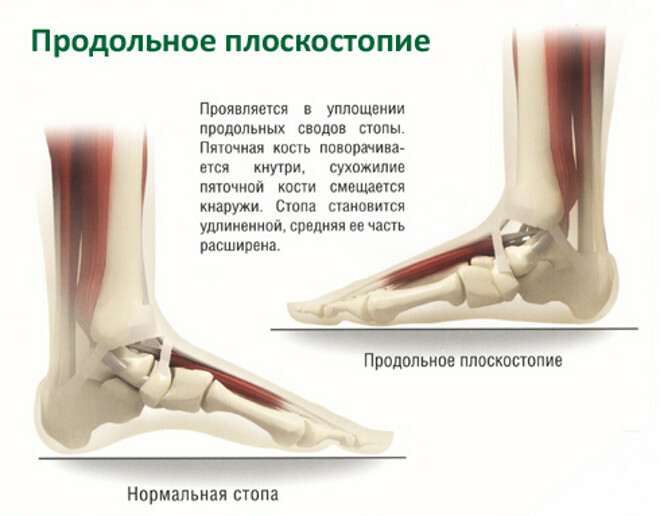
The causes of the appearance of various forms of flatfoot
The formation of various forms of flatfoot is due to a number of certain objective or subjective factors.
Diagnosing as an inborn form of flatfoot in children is problematic enough until the baby is 5-6 years old.At an earlier age, the child somehow has signs of a flat foot, which is an anatomical norm.According to statistics, the congenital form of pathology occurs in about 3% of cases, and it develops as a result of improper intrauterine formation of the skeleton and ligaments of the lower limbs.
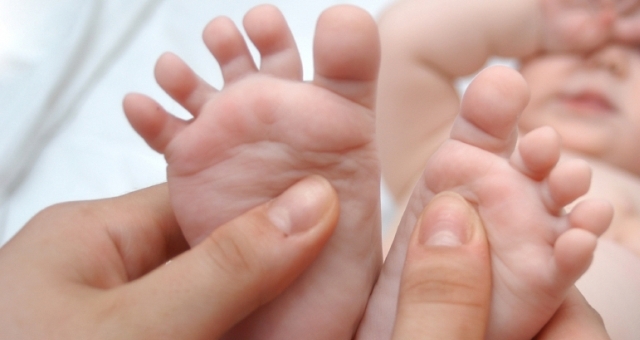
The rickety flatfoot appears on the background of rickets.In this disease, the bones of the foot are very weak as a result of a sharp shortage of calcium, and flattening of the arches is a consequence of the usual physical load.
The reason for the appearance of traumatic platypodia in a human is a fracture of the calcaneus or bones of the tarsal region.
The cause of development of paralytic variety of flatfoot is the paralysis of the muscles of the shin and / or musculature of the plantar part of the foot.In the overwhelming majority of cases, this form of pathology develops after the transferred poliomyelitis and other neuroinfections.
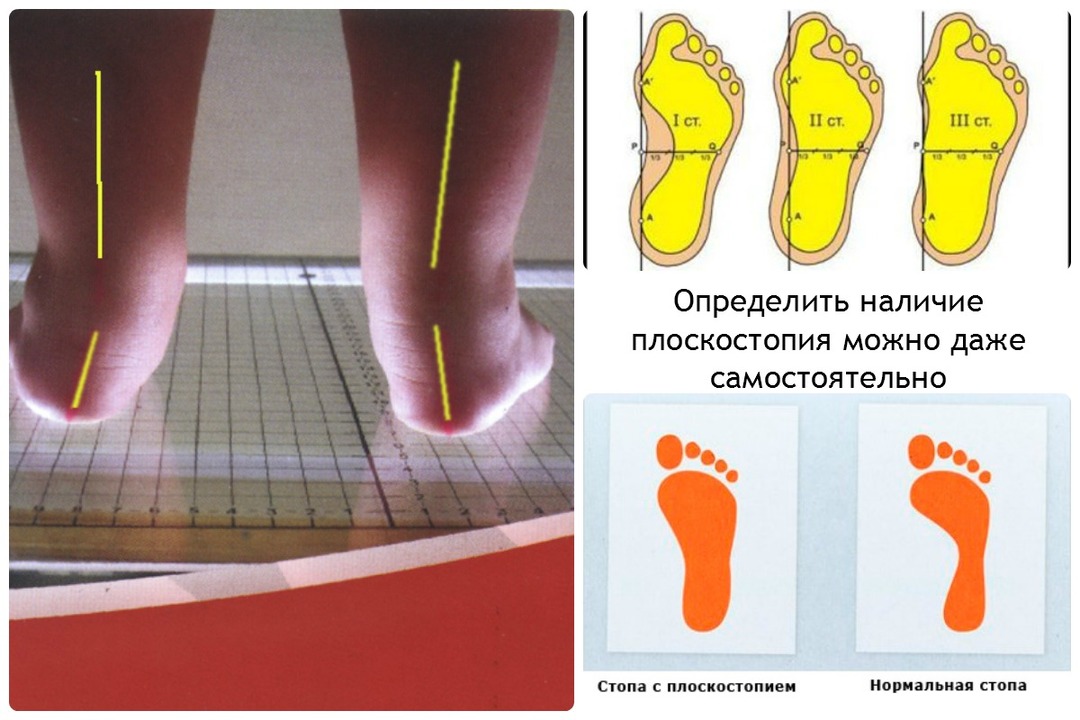
Most often, orthopedic specialists have to face with a static flat-foot .The cause of its development is the weakness of the bones of the lower limbs, as well as their ligamentous and muscular apparatus.
Some factors predisposing to the formation of static flatfoot:
-
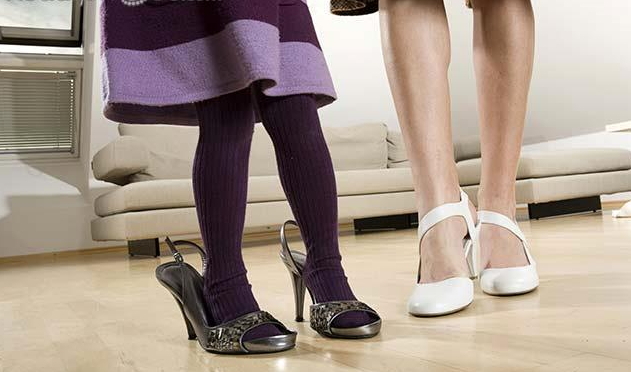 hereditary( genetically determined) predisposition;
hereditary( genetically determined) predisposition; - constantly wear uncomfortable( tight or narrow) shoes;
- labor activity associated with permanent standing in a vertical( standing) position;
- weakening of the musculature against the background of physiological aging;
- significant increase in patient weight;
- lack of adequate loads on the foot with a sedentary lifestyle.
Possible causes include excessive physical load during jogging and jumping, as well as the constant wearing of incorrectly selected( uncomfortable) shoes.
Symptoms of flatfoot
Among the frequent clinical signs of flatfoot are:
- deformation of the foot;
- pain( localized in the area of the feet, or spread to the knee joints, hips and even back);
- rapid fatigue of the feet;
- "heavy"( "overwhelming") gait and / or clubfoot;
- puffiness of the ankles in the evening;
- convulsions in the gastrocnemius muscles( not always);
- problems with maintaining balance when squatting.
When flat feet are launched, the pain may spread to the base of the skull.
Important: one of the symptoms of flat feet is the inability to wear habitual shoes.
Complications
Complications of flatfoot may include:
- "valgus stop";
- arthrosis;
- scoliosis;
- ingrown nail;
- leg varicose.
Diagnostics of flatfoot
A preliminary diagnosis is made during the examination, as well as on the basis of the data obtained during the study by means of a subgraph.
During the survey, the nature of the gait and the volume of movements in the ankle are determined.Complaints of the patient allow to establish intensity and character of pains( permanent or intermittent).Useful information can give an inspection of the patient's shoes( specific wear).
Note: in women is diagnosed with a flatfoot four times more often than in men.Often, pathology develops during pregnancy due to physiological weight gain.
The main diagnostic method that allows to determine not only the presence, but also the nature and degree of pathology, is the radiography in two projections.X-ray examination is carried out with the load, i.e. the patient must stand.
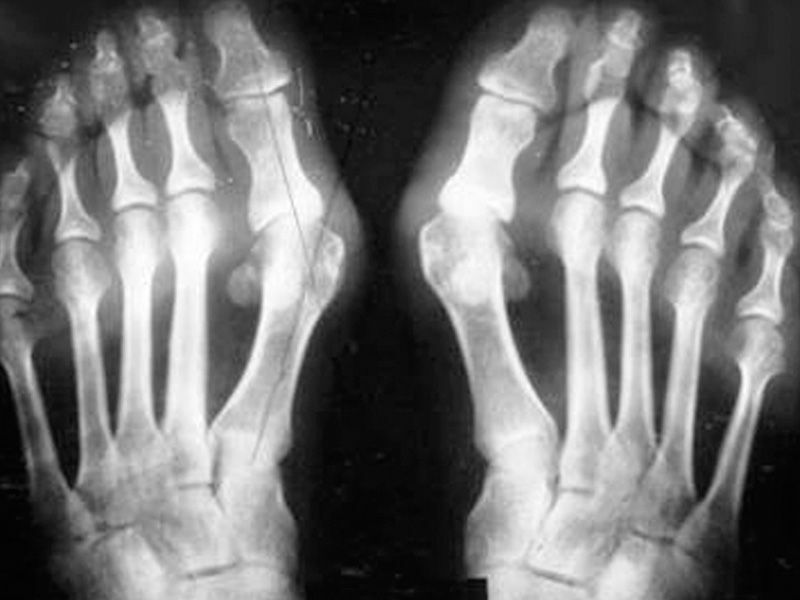
If a transverse shape is detected during the analysis of the images, three lines are marked on them, corresponding to the longitudinal axes of I and II metatarsal bones, as well as the first phalange of the thumb.The angle between them allows to establish the degree of development of pathology.
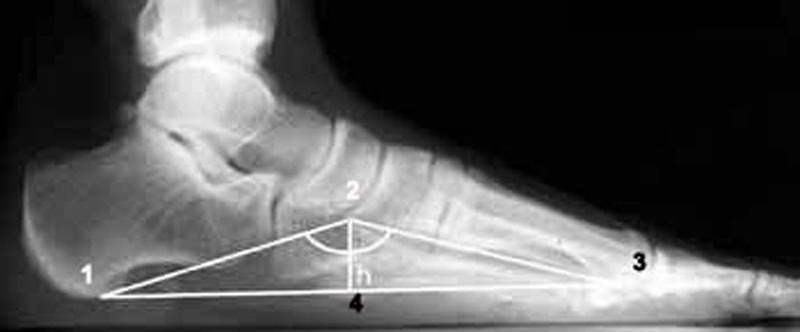
To determine the degree of development of the longitudinal shape, analysis of the image taken in the lateral projection is necessary.It draws three lines, forming a triangle between each other, the obtuse angle of which is directed upwards.It determines the pathological increase in the angle of the longitudinal arch.
How to treat a flat foot?
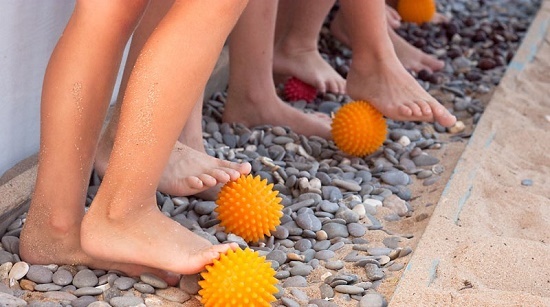 For the relief of pain syndrome, physiotherapy is widely used.In addition, the patient is prescribed medications-analgesics.
For the relief of pain syndrome, physiotherapy is widely used.In addition, the patient is prescribed medications-analgesics.
To restore the physiological shape of the foot, the orthopedic specialist selects special orthopedic insoles for the patient.Corrective liners are placed on the front of the shoe, under the heel and( or) in the interdigital spaces.The optimal design is a liner with a supinator in the calcaneal region and a pronator in the anterior part.Such an insole reduces the stretching of the muscles due to the correct "twisting" of the foot.With the advanced form of the disease, special orthopedic shoes with a sole and high lacing are made to order.
Important: insole must be selected strictly individually after taking measurements and establishing the nature and degree of flattening of the foot.
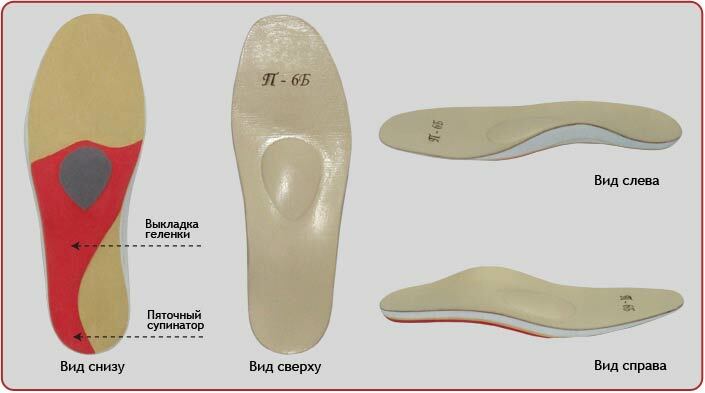
For the treatment of flatfoot massage is recommended and developed specially for such patients complex exercise therapy.In severe cases, surgical intervention may be required.In the course of the operation, a part of the foot bones is resected.The purpose of such remodeling operations is the restoration of the physiological form of the arch.Most often, surgical methods of treatment have to resort to a traumatic variety of flat feet.For the treatment of congenital platypodia, from the first days of life the baby is put on gypsum bandages on the legs, and subsequently - they select orthopedic footwear.
Flatfoot prevention
Flatfoot prevention involves eliminating the causes that can cause pathology.It is advisable to give up wearing an uncomfortable tight shoe.Legs need more rest.It is recommended to hold a foot massage and make hot foot baths more often.
More detailed information on the symptoms, treatment and prevention of flatfoot in children you will get by watching this video review:
Plisov Vladimir, medical reviewer



